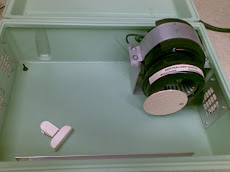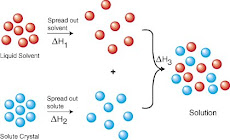MICROEMULSION GEL
% by weight
Part A
MINERAL OIL 38.0
OLEIC ACID 9.0
Part B
TRIETHANOLAMINE 3.0
PROPYLENE GLYCOL 5.0
T-DET® N-9.5 6.0
WATER 39.0
100.0
MIXING:
PART A: Mineral Oil – Heat to 120°F
PART B: Triethanolamine, Propylene Glycol, N-9.5 & Water – Heat to
120°F
S L O W L Y add Part B to Part A while mixing
*VISCOSITY ACHIEVED AS THE PRODUCT COOLS*
To lower the set point you can add salt or additional Propylene Glycol
jueves, 19 de mayo de 2011
EASY GEL FORMULATION FOR AIR FRESHENER
BED BUGS CAN TRANSFER BACTERIA
According to an article scheduled to be released in the June 2011 issue of Energing Infectious Diseases, a U.S. Centers for Disease Control and Prevention public health journal, bedbugs were reportedly refound to carry Methicillin-resistant Staphylococcus aureus (MRSA) and Vancomyclin-resistant Enterococcus (VRE). Although bedbugs have not been shown to spread disease to date, Canadian researchers have now proven that they at least carry bacteria known to cause these sometimes hard-to-treat infections.
At this time, there is no clear evidence that the bedbugs have spread the MRSA or VRE germs they were carrying, but according to Dr. Marc Romney, a medical biologist with St. Paul’s Hospital in Vancouver, “this is an intriguing finding” that needs to be further researched.
Five bedbugs were analyzed. MRSA was found in three of the bugs and VRE in two.
Romney also noted that the hospital is in an area of Vancouver that has recently seen a “boom in bedbugs” and a significant increase in MRSA cases.
Bedbugs are about 7 mm long, wingless and reddish brown in color and feed on the blood of their victims. Because they are so small, they are often hard to detect, and the situation is made worse because they commonly live in the cracks and crevices of mattresses.
In the past couple of years, finding ways to eradicate bedbugs has garnered considerable attention in the professional cleaning industry.
For instance, Michael Schaffer, president of Tornado Industries and a senior executive with Tacony’s Commercial Floor Care division, has authored several industry articles on the subject. He has also published a white paper, Effective Treatment of Bedbug Infestations, which suggests ways the jan/san industry can help eradicate bedbugs and do so in a more environmentally responsible manner.
“The study does not indicate exactly how the bedbugs picked up the bacteria, but this is definitely a concern,” says Schaffer. “In the past, bedbug bites were mostly bothersome. While more research is required, [this study] makes the bites far more serious.”
miércoles, 11 de mayo de 2011
SEE CONVERSION OF ALGAE INTO OIL AND FUEL
GO TO : http://www.youtube.com/watch?v=FPT-houUjJI&feature=related
Vistas de página en total
GREEN CHEMICALS
Also the materials have to meet with toxicity and health requirements regarding inhalation, dermal and eye contact. There is also a specific list of materials that are prohibited or restricted from formulations, like ozone-depleting compounds and alkylphenol ethoxylates amongst others. Please go to http://www.greenseal.com/ for complete information on their requirements.
For information on current issues regarding green chemicals, see the blog from the Journalist Doris De Guzman, in the ICIS at: http://www.icis.com/blogs/green-chemicals/.
Certification is an important — and confusing — aspect of green cleaning. Third-party certification is available for products that meet standards set by Green Seal, EcoLogo, Energy Star, the Carpet & Rug Institute and others.
Manufacturers can also hire independent labs to determine whether a product is environmentally preferable and then place the manufacturer’s own eco-logo on the product; this is called self-certification. Finally, some manufacturers label a product with words like “sustainable,” “green,” or “earth friendly” without any third-party verification.
“The fact that there is not a single authoritative standard to go by adds to the confusion,” says Steven L. Mack M.Ed., director of buildings and grounds service for Ohio University, Athens, Ohio.
In www.happi.com of June 2008 edition, there is a report of Natural formulating markets that also emphasises the fact that registration of "green formulas" is very confused at present, due to lack of direction and unification of criteria and that some governmental instittion (in my opinion the EPA) should take part in this very important issue.










































